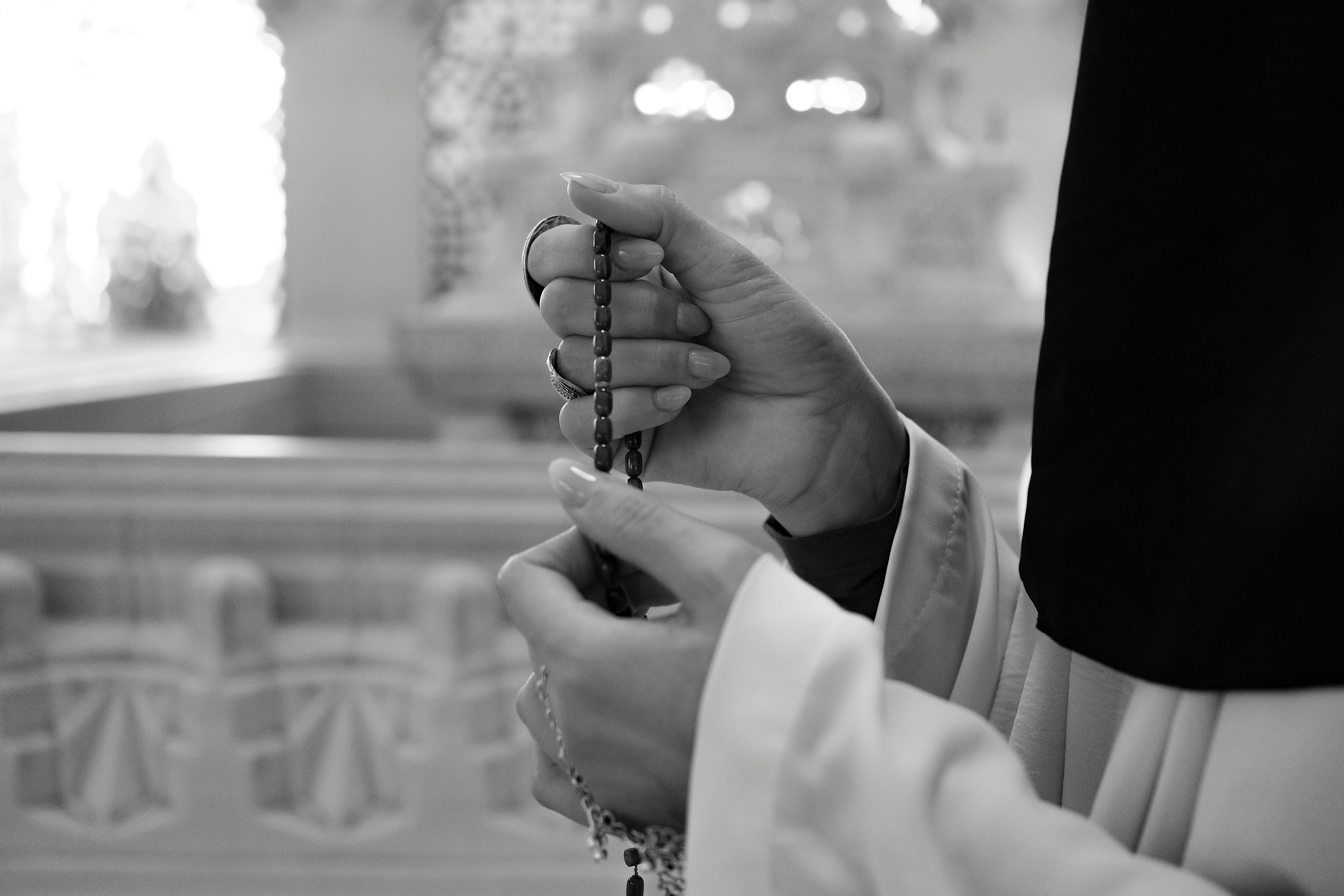Are you a left-handed cook looking to enhance your culinary skills in the kitchen? Look no further! Tastepan has got you covered with our helpful guide, “Knife Skills For Left-Handed Cooks: Adapt And Excel.” We understand the unique challenges that left-handed individuals face when it comes to wielding a knife, and we are here to provide you with expert tips and techniques to overcome those obstacles. With our comprehensive resources, you’ll be able to adapt your knife skills to your advantage and achieve excellence in your cooking endeavors. Get ready to take your culinary game to the next level with this invaluable guide specifically designed for left-handed cooks.

Knife Skills for Left-Handed Cooks: Adapt and Excel
Cooking is a skill that requires precision and technique, and this holds true for left-handed cooks as well. While being left-handed may present some challenges when it comes to certain tasks, such as using right-handed tools, it should never hold you back from excelling in the kitchen. With some adjustments and a bit of practice, you can master the art of knife skills and become a skilled left-handed cook. In this comprehensive guide, we will break down the challenges faced by left-handed cooks, offer tips on choosing the right knife, provide guidance on proper grip and hand positioning, and delve into various knife cutting techniques. Additionally, we will explore tips for speed and efficiency, as well as offer advice on knife sharpening and maintenance specifically for left-handed cooks. So, let’s get started and unlock the potential of your left-handed knife skills!
Understanding the Challenges of Left-Handed Knife Skills
An Overview of Left-Handed Cooks
Being left-handed is not uncommon, with approximately 10% of the global population being left-handed. Left-handed individuals have a natural inclination to use their left hand for most tasks, and this includes cooking. However, the majority of kitchen tools and equipment are designed for right-handed individuals, which can pose challenges for left-handed cooks.
Common Challenges and Difficulties
Left-handed cooks often encounter difficulties when using right-handed tools, such as knives. This can include discomfort, lack of control, and decreased cutting efficiency. The orientation of the blade and handle is designed for right-handed users, making it uncomfortable and potentially dangerous for left-handed individuals. Additionally, understanding and adapting knife cutting techniques can be a challenge for left-handed cooks due to the dominant right-handed teaching methods prevalent in culinary education.
Adapting Techniques for Left-Handed Cooks
Fortunately, there are ways for left-handed cooks to adapt and excel in the kitchen. By making a few adjustments and adopting techniques tailored to your dominant hand, you can overcome the challenges faced by left-handed cooks. From choosing the right knife to mastering proper grip and hand positioning, we will explore techniques that will empower you to adapt and excel in your knife skills as a left-handed cook.

Choosing the Right Knife for Left-Handed Cooks
Understanding Knife Anatomy and Design
To start on the right foot, it is crucial to understand the anatomy and design of a knife. Knives consist of a blade, handle, bolster, and tang. The blade is the most important part of the knife as it performs the cutting action. The handle provides grip and stability, while the bolster acts as a protective barrier between the blade and the handle. The tang refers to the portion of the blade that extends into the handle. By knowing these components, you can better evaluate knives for their suitability for left-handed use.
Ambidextrous Knives vs. Left-Handed Knives
When it comes to choosing a knife, there are two main options for left-handed cooks: ambidextrous knives and left-handed knives. Ambidextrous knives are designed to be equally comfortable for both right-handed and left-handed users. They feature a symmetrical blade and handle, making them versatile for any cook. On the other hand, left-handed knives are specifically designed with a left-handed orientation, making them more ergonomic and comfortable for left-handed individuals.
Features to Look for in a Left-Handed Knife
When selecting a knife as a left-handed cook, there are a few key features to consider. Look for knives with an asymmetrical blade grind, where one side is more acute than the other. This allows for better sharpness and precision when cutting with the left hand. Additionally, knives with an ergonomic handle that accommodates the grip of a left-handed user can greatly enhance comfort and control. Remember, the right knife can make a significant difference in your knife skills as a left-handed cook.
Proper Grip and Hand Positioning
Importance of Grip and Hand Placement
Proper grip and hand positioning are essential for maintaining control and precision while cutting. For left-handed cooks, it is crucial to adopt a grip and hand placement that maximizes efficiency and minimizes the risk of accidents. Understanding and practicing the left-handed grip will greatly contribute to your overall knife skills.
Demonstration of the Left-Handed Grip
To achieve the left-handed grip, start by holding the knife with your left hand, ensuring that your index finger is extended along the spine of the blade. Wrap your remaining fingers comfortably around the handle, allowing for a secure grip. Keep your thumb resting on the opposite side of the blade, serving as a guide and stabilizer. This grip will provide better control and maneuverability for left-handed cooks.
Tips for Maintaining Control and Precision
To ensure optimal control and precision while cutting, there are a few additional tips to keep in mind. First, maintain a relaxed grip, as gripping too tightly can hinder fluidity and lead to fatigue. Secondly, position your hand and forearm so that they are aligned with the blade, allowing for a smooth cutting motion. Finally, always pay attention to your cutting technique and adjust as necessary to maintain accuracy and safety. With consistent practice and attention to detail, you will gradually develop the muscle memory and finesse required for exceptional left-handed knife skills.

Mastering Basic Knife Cuts
Introduction to Essential Knife Cuts
Before diving into specific cutting techniques, it is important to have a solid foundation in basic knife cuts. Basic knife cuts are the building blocks of many recipes, and mastering them will enhance your efficiency and accuracy in the kitchen. There are several fundamental knife cuts, including the slice, dice, chop, julienne, and brunoise. Understanding the purpose and mechanics of each cut is vital for honing your left-handed knife skills.
Step-by-Step Instructions for Left-Handed Cooks
When performing basic knife cuts as a left-handed cook, it is crucial to adapt the techniques to your dominant hand. Start by placing the ingredient on the cutting board with your non-dominant hand, keeping your fingers tucked in a claw-like position to ensure safety. With your dominant hand, grip the knife using the left-handed grip we discussed earlier. Proceed with the cut, utilizing fluid, controlled motions in alignment with your left hand. Remember to pay attention to your hand placement and grip throughout the entire cutting process, making adjustments as needed for optimal control and precision.
Common Mistakes and How to Avoid Them
As with any skill, it is important to be aware of common mistakes and how to avoid them. Some common mistakes made by left-handed cooks include applying too much pressure while cutting or using improper hand placement. To avoid these mistakes, focus on using fluid and controlled motions, and ensure that your hand and forearm are aligned with the blade. Additionally, maintain a relaxed grip and periodically check your hand placement to ensure accuracy and safety. With practice and mindfulness, you can overcome these common pitfalls and elevate your left-handed knife skills.
Chopping Techniques for Left-Handed Cooks
Chopping vs. Dicing vs. Mincing
When it comes to chopping techniques, it is essential to understand the distinctions between chopping, dicing, and mincing. Chopping involves applying downward force to cut ingredients into irregular-sized pieces. Dicing, on the other hand, refers to cutting ingredients into uniform cube-shaped pieces. Mincing involves finely cutting ingredients into tiny, uniform pieces. While these techniques may seem similar, each has its own unique purpose and application in cooking.
Techniques for Left-Handed Cooks
Left-handed cooks can adopt specific techniques to excel in chopping. Start by adopting the left-handed grip we discussed earlier, ensuring that your hand and forearm are aligned with the blade. When chopping, use a rocking motion with the knife, moving the blade back and forth while applying downward pressure. This technique allows for efficient and controlled chopping, enabling you to achieve the desired consistency in your ingredients.
Efficient Chopping Methods
To further enhance your chopping efficiency as a left-handed cook, consider employing additional methods. For larger ingredients, such as onions or peppers, consider halving or quartering them before chopping. This will provide a stable base and allow for easier control while cutting. Additionally, practicing your knife skills with consistent repetition will improve your speed and muscle memory, leading to increased proficiency and efficiency over time.
Slicing Techniques for Left-Handed Cooks
Perfecting Thin and Even Slices
Slicing is a technique frequently used in the culinary world, especially when it comes to cutting proteins, bread, or delicate ingredients. Mastering the art of thin and even slices is essential for achieving consistent cooking results and presentation. As a left-handed cook, adopting the appropriate techniques will enable you to slice with precision and finesse.
Tips for Left-Handed Cooks
To excel in slicing as a left-handed cook, it is important to focus on adaptability and control. Utilize the left-handed grip and align your hand and forearm with the blade. Start with a firm yet delicate grip, allowing the weight of the knife to guide the slicing motion. Apply even pressure and maintain a smooth, consistent cutting rhythm. Take your time and pay attention to the thickness of each slice, adjusting as necessary to achieve uniformity. With practice and attention to detail, you will soon become a master of thin and even slices.
Applications and Recipes
Mastering slicing techniques opens up a world of culinary possibilities. From thinly slicing proteins for stir-fries to cutting delicate slices of cake for an elegant dessert presentation, the applications are vast. Consider exploring recipes that highlight the importance of slicing, such as sushi rolls, carpaccio, or homemade bread. The more you practice and apply your slicing skills, the more confident and proficient you will become as a left-handed cook.
Dicing Techniques for Left-Handed Cooks
Achieving Uniform Cube-shaped Pieces
Dicing is a foundational knife skill that allows for the creation of consistent cube-shaped pieces. Whether you’re dicing vegetables for a stir-fry or preparing ingredients for a salsa, mastering dicing techniques as a left-handed cook is essential for achieving even cooking and presentation.
Step-by-Step Instructions for Left-Handed Cooks
To achieve uniform cube-shaped pieces while dicing as a left-handed cook, start by ensuring your grip and hand placement are aligned with your dominant hand. Begin by cutting the ingredient into planks or slices of equal thickness, using a rocking motion with the knife. Stack the slices and cut them into strips of equal width, maintaining a controlled cutting motion. Finally, align the strips and cut them into cube-shaped pieces, adjusting the size as desired. By following these step-by-step instructions and remaining mindful of your left-handed technique, you will be able to achieve beautifully diced ingredients.
Creative Dicing Variations
Once you have mastered the basic dicing techniques, you can explore creative variations to add flair and versatility to your cooking. Consider experimenting with different ingredient shapes, such as diamond-shaped dices or rectangular strips. These variations can add visual interest and enhance the texture of your dishes. Furthermore, consider exploring recipes that call for specific dicing techniques, such as mirepoix for soups or brunoise for garnishes. The more you practice and experiment with dicing, the more adept you will become as a left-handed cook.
Julienne and Brunoise Techniques for Left-Handed Cooks
Creating Thin Matchstick-like Strips
Julienne and brunoise are advanced knife cutting techniques that involve creating thin matchstick-like strips and small, uniform cube-shaped pieces, respectively. These techniques require precision and dexterity, making them ideal for left-handed cooks looking to elevate their skills.
Tips for Left-Handed Cooks
The key to excelling in julienne and brunoise techniques as a left-handed cook lies in your grip, hand placement, and focused attention to detail. Align your hand and forearm with the blade, maintaining a firm yet controlled grip. Start by cutting the ingredient into planks or slices of equal thickness, ensuring precise, uniform pieces. Stack the slices and cut them into thin matchstick-like strips for julienne, or into small, uniform cube-shaped pieces for brunoise. Remember to adjust your technique as needed, taking into consideration the left-handed orientation of the blade and your hand placement. With patience and practice, you will be able to achieve julienne and brunoise cuts with finesse and precision.
Utilizing Julienne and Brunoise in Different Dishes
The julienne and brunoise techniques add elegance and texture to a wide range of dishes. From garnishing salads to adding visual interest to stir-fries, julienne and brunoise cuts elevate the presentation and flavor profile of your culinary creations. Expand your repertoire by exploring recipes that specifically call for julienne or brunoise techniques, such as classic French ratatouille or a refreshing cucumber and carrot salad. As you become more skilled in these advanced techniques, you will find yourself versatile and confident in your left-handed knife skills.
Tips for Speed and Efficiency
Focus on Correct Technique
To improve speed and efficiency as a left-handed cook, it is important to focus on correct technique. By maintaining proper grip, hand placement, and knife control, you can achieve faster and smoother cutting motions. Remember to align your hand and forearm with the blade, and make precise, deliberate cuts. With practice, you will develop muscle memory and increase your overall speed and efficiency.
Practice Regularly
As with any skill, practice is vital for improvement. Set aside dedicated practice sessions to hone your left-handed knife skills. Practice cutting different ingredients, experiment with various techniques, and challenge yourself with recipes that push your abilities. The more regularly you practice, the more comfortable and proficient you will become as a left-handed cook.
Stay Organized and Prepared
Being organized and prepared in the kitchen can greatly improve speed and efficiency. Before starting any cutting or cooking tasks, ensure you have all the necessary ingredients and tools readily available. Have a clear workspace and arrange your cutting board, ingredients, and knife in an ergonomic manner. By minimizing the time spent searching, fumbling, or rearranging during the cooking process, you can focus on the task at hand and maximize your speed and efficiency as a left-handed cook.
Knife Sharpening and Maintenance Tips for Left-Handed Cooks
The Importance of Sharp Knives
Regardless of your dominant hand, sharp knives are essential for safe and efficient cutting. Dull knives require more pressure and can slip, increasing the risk of accidents. Maintaining sharp knives is crucial for achieving clean and precise cuts as a left-handed cook.
Sharpening Tools and Techniques for Left-Handed Cooks
When it comes to sharpening your knives as a left-handed cook, there are several options available. Traditional whetstones are versatile and effective, allowing for precise sharpening control. Electric knife sharpeners are convenient and provide consistent results, although they may require a bit of practice to achieve optimal results for left-handed grip. Alternatively, you can seek professional sharpening services that cater to left-handed individuals. Whichever method you choose, remember to follow the instructions carefully and focus on maintaining a consistent angle and pressure throughout the sharpening process.
Proper Care and Storage of Knives
In addition to sharpening, proper care and storage of your knives are crucial for preserving their longevity and performance. As a left-handed cook, ensure that you dry your knives thoroughly after each use to prevent rust and corrosion. Avoid placing knives in a dishwasher, as the high heat and harsh detergents can damage the blades. Instead, hand wash your knives using a gentle dish soap and warm water. When storing your knives, consider investing in a left-handed knife block or a magnetic knife strip to keep your blades safely and conveniently accessible. By practicing proper care and storage, you can extend the lifespan of your knives and enjoy consistent cutting performance.
In conclusion, being a left-handed cook should never be seen as a limitation. With the right approach, proper knife selection, and focused practice, you can adapt and excel in your knife skills. Understanding the challenges faced by left-handed cooks, choosing the right knife, mastering the proper grip and hand positioning, and familiarizing yourself with various knife cutting techniques are essential steps to becoming a skilled left-handed cook. Additionally, implementing tips for speed and efficiency and maintaining your knives through sharpening and proper care will further enhance your culinary journey. Embrace your left-handedness, adapt, and unlock your full potential as you navigate the kitchen with confidence and finesse. Happy cooking!

